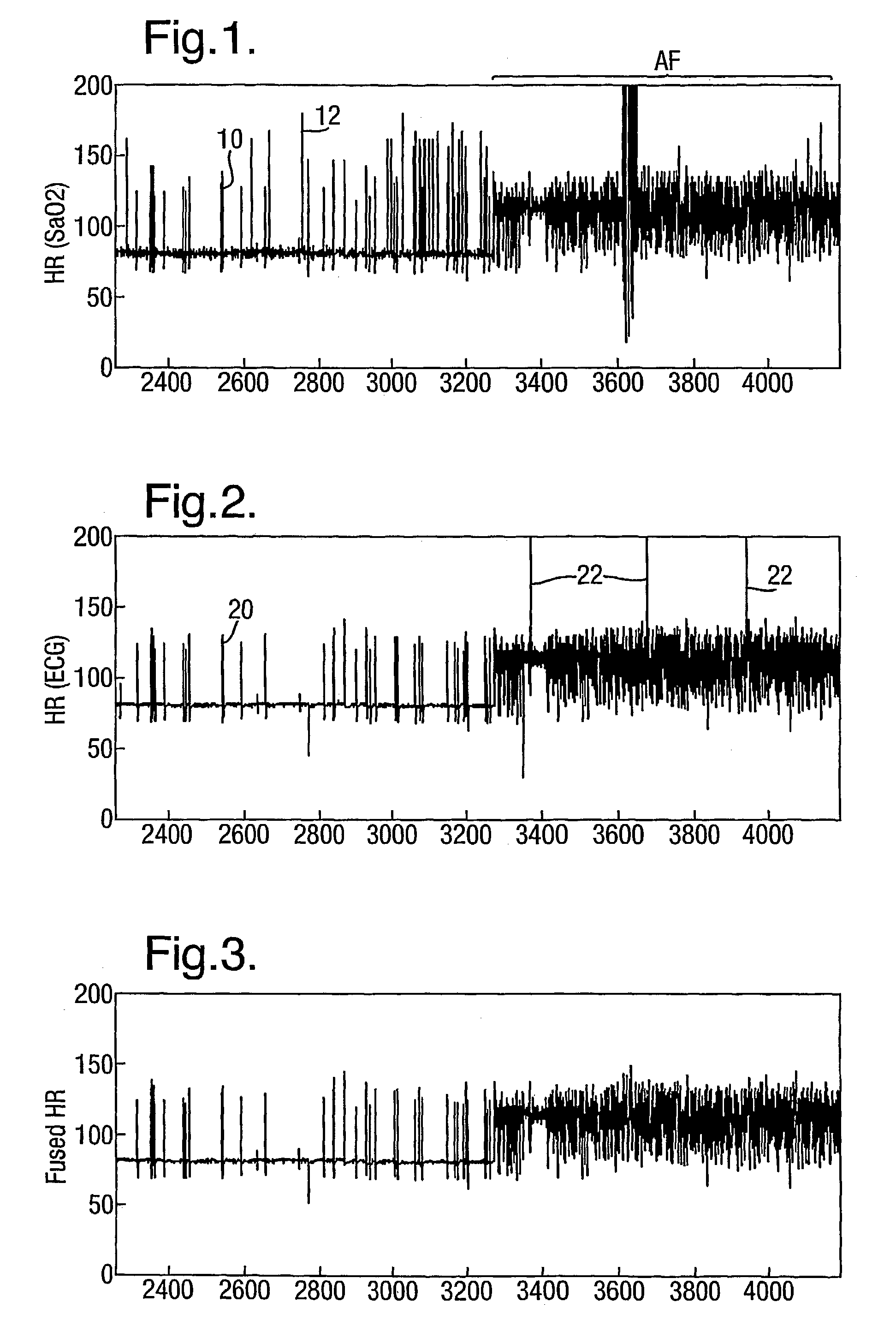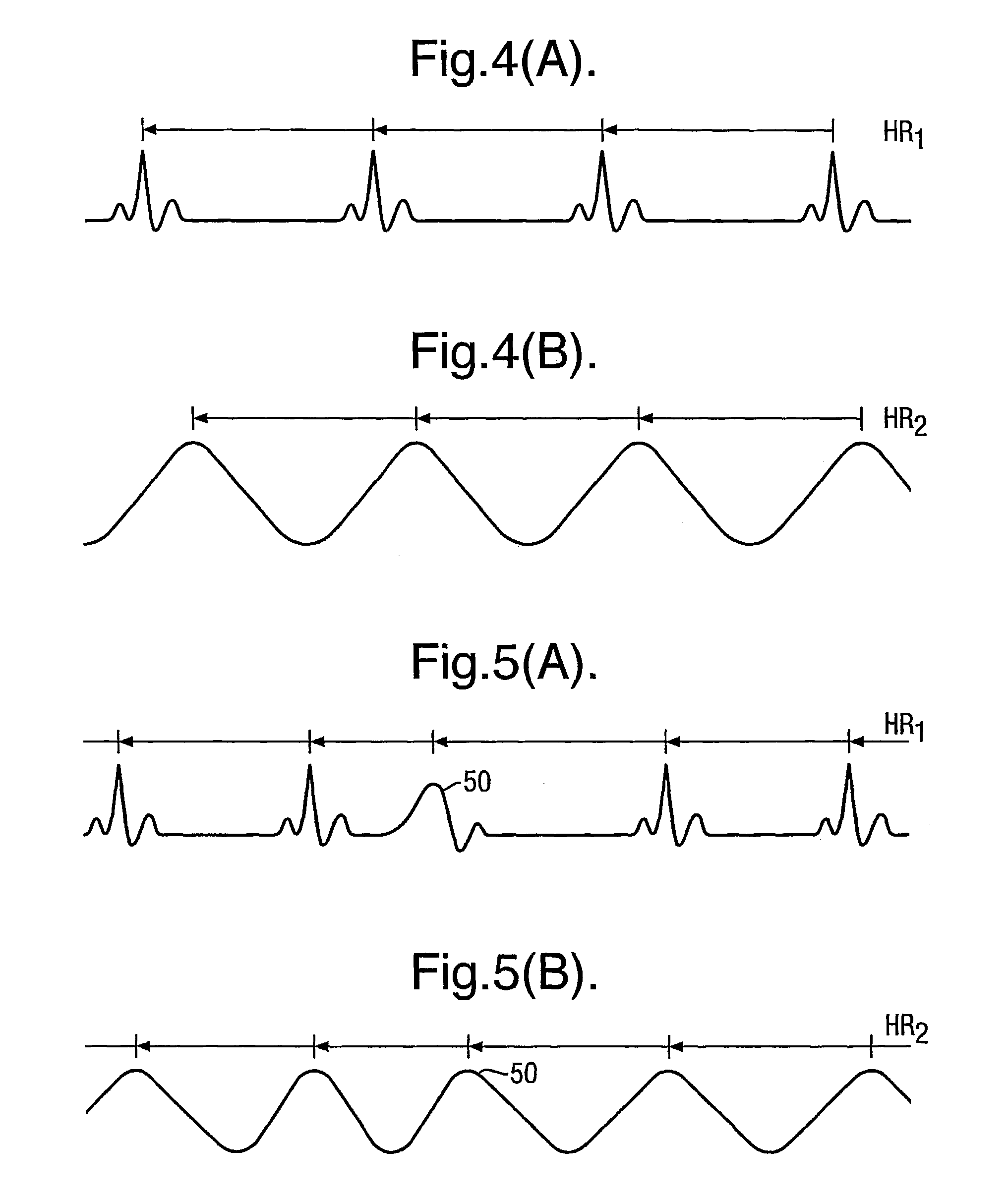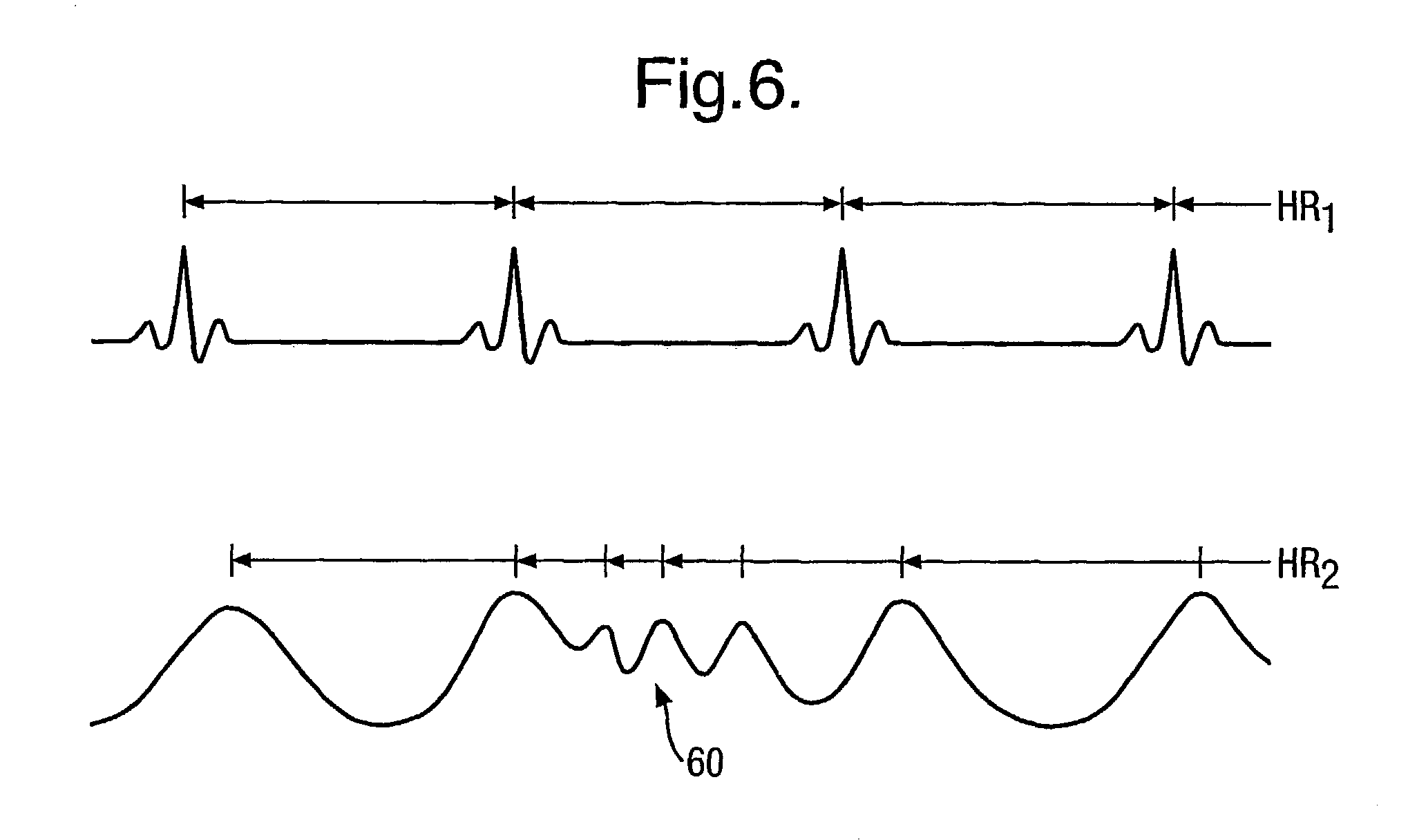Combining measurements from different sensors
a technology of different sensors and combined measurements, applied in the field of combining measurements from different sensors, can solve the problems of inability to meet the threshold of all patients for all recordings, inability to cross-correlate the normal approach of one measurement channel against the other, and the effect of improving the measurement of a parameter
- Summary
- Abstract
- Description
- Claims
- Application Information
AI Technical Summary
Benefits of technology
Problems solved by technology
Method used
Image
Examples
Embodiment Construction
[0026]An embodiment of the invention will now be described in which the invention is applied in the medical field to the measurement of heart rate using ECG and pulse oximetry. As illustrated in FIG. 4a the heart rate measured by ECG is derived from the interval between two successive R-wave peaks. The heart rate measurement derived from the pulse oximetry waveform is obtained from the interval between two successive peaks (or troughs) as illustrated in FIG. 4b. FIGS. 1 and 2 illustrate heart rate plots derived from these two measurements.
[0027]With this embodiment of the present invention a model of the process generating the heart rate is constructed. The same model is run independently for each measurement source (i.e. one for the ECG measurement channel and one for the pulse oximetry measurement channel). In this embodiment the model is a Kalman filter. In general a Kalman filter uses a process model and an observation model. The process model models the state of the system at t...
PUM
| Property | Measurement | Unit |
|---|---|---|
| weights | aaaaa | aaaaa |
| time | aaaaa | aaaaa |
| current | aaaaa | aaaaa |
Abstract
Description
Claims
Application Information
 Login to View More
Login to View More - R&D
- Intellectual Property
- Life Sciences
- Materials
- Tech Scout
- Unparalleled Data Quality
- Higher Quality Content
- 60% Fewer Hallucinations
Browse by: Latest US Patents, China's latest patents, Technical Efficacy Thesaurus, Application Domain, Technology Topic, Popular Technical Reports.
© 2025 PatSnap. All rights reserved.Legal|Privacy policy|Modern Slavery Act Transparency Statement|Sitemap|About US| Contact US: help@patsnap.com



